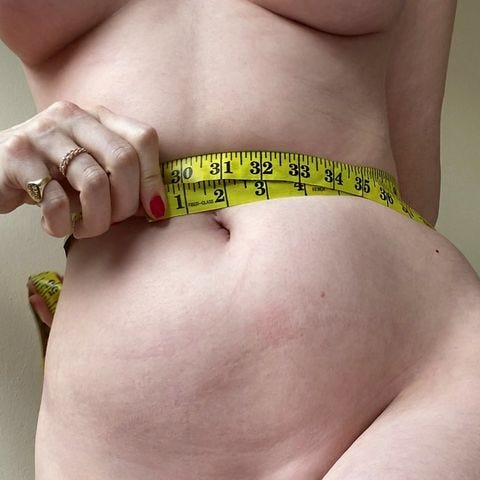
Fashion and politics, politics and fashion - two things so closely intertwined they’re hard to separate. Whatever fashion moment we’re currently living through, whatever trends are circling the fashion sphere, political undertones that permeate the world of fashion are never far from being debated. Fashion relies on its transformative powers and political fashion relies on its ability to be deployed as a tool that stands against social and cultural issues, and in an age of wokeness and culture wars, there is never one sole political fashion current.
Fashion may seem like its making progress when it comes to issues such as diverse representation and body inclusivity - with models like Precious Lee, Jill Kortleve and Paloma Elsesser regularly landing magazine covers and gracing luxury labels runway shows - and you’d be forgiven for thinking that the world of fashion is slowly moving on, becoming less superficial, more accepting even. But unattainable body standards and super-slim ideals seem to be working their way back into the main fashion sphere, with the body-inclusivity double standard further exacerbating issues rather than solving them.
Body politics in fashion
For all of fashion's moves towards a more progressive industry that's welcoming all with open arms, the glorified images we’re currently seeing aren’t a far departure from the norm. Yes we may be seeing a wider range of races (however tokenistic), and greater size inclusivity (even this is lacking), but where’s the disabled representation? The modest fashion that caters to different religious and cultural beliefs? The cross-generational shows and campaigns that transcend generations?
In hushed tones and whispers there's been cause for concern as many believe fashion is regressing, harking back to a heyday when low-slung jeans and bare midriffs were modelled by ultra-thin fashion it-girls that promoted toxic body standards. Heroin chic and the thigh gap shaped many peoples relationship with body image in the noughties sending out a standardised message of what’s considered beautiful, and rather worryingly the fashion industry’s promotion of the thin ideal is still ever-present.
Body politics and fashions slow progress see size inclusivity as something that's here today and gone tomorrow, more like a TikTok trend or core aesthetic that has an eventual expiry date. Body shapes flow in and out of fashion, and the tastemakers responsible for creating fashion imagery have a responsibility to make fashion magazines, advertising campaigns, billboards and anything else that fashion touches more size inclusive.
Toxic body standards and exclusionary trends
The teeny tiny mini skirts at Miu Miu’s AW22 runway show would barely cover an averaged-sized woman’s ass, and the flesh-flashing crop tops and skirts so small you could see underwear at Conner Ives and Poster Girl show that skin is very much in. A return to skimpy clothing, the cut-out trend and naked dresses renews a desire for an era in pop culture that scorned fuller-figured women and idolised the thinnest of the thin. But just as ideas around who gets to wear what begin to fade, we’re still not seeing trend-focused clothing in a range of sizes that can be worn by the mainstream.
Instead, exclusionary trends are mostly modelled by those who can fit into sample sizes. It’s one thing for a plus-size model to be able to wear a cut-out look or micro-mini skirt on the front cover of a magazine - where pieces have most likely been custom made - but it's another thing entirely to design and make for bodies that can wear these clothes IRL. Is it any surprise that there were no plus-sized models selected to wear looks like these across the board at the AW22 runway season?
When we design clothing with a singular type of body in mind, people are bound to get left out and left behind. After all, only a select few can participate in a trend cycle that's so restrictive. But the rise in self-expression and individual style fuelled by social media means society is finally loosening its grip on exclusionary trends. What’s deemed fashionable is no longer decided solely by fashion insiders, and as fashion becomes more democratised trends are starting to lose clout - we can thank the rise in social media for that, if nothing else at least.
Body inclusivity and curve washing
There are some brands going against the curve washing grain by designing with a range of bodies in mind; Chromat designs multidimensional clothing for all bodies. Ester Manas’s collections consist of figure-hugging dresses, slim-fitting skirts and bra tops that plus-size women can model on the runways as well as wear IRL, they’re also developing new techniques that cater to true size inclusivity. And Lizzo’s new shape wear brand Yitty is hoping to disrupt and disturb fashion's fake veneer by catering to bodies of every size, offering one of the widest size ranges on the market - XS to 6X.
While fashions steer towards body inclusivity can seem performative, and endless fashion politics threatens to overshadow the need for lasting and impactful change, what will it take to make definable progress and dispel unattainable fashion standards and body ideals?
We’re seeing a greater cultural shift in the way we think and talk about fashion; and a new wave of body consciousness and fashionable politics that allows us to explore the complex relationship between fashion, bodies, race, gender, religion, culture, sexuality and so much more. As we start to move towards profound change, where will fashion's preoccupation with body ideals take us next?
What are your thoughts on body inclusivity in fashion? How do you think fashionable politics influences size representation in the fashion realm?
Share this post, feel free to comment, and subscribe to Fashion Tingz to keep the conversation going.







